Oceanography
-
 AGRIF on Nature Front Cover:
AGRIF on Nature Front Cover:
A recent study showed modifications of water transport from Indian to Atlantic Ocean, which is crucial to the global climate system. In oceanography, numerical simulations are very computer-time demanding. This particular study, by a german team of researchers, in collaboration with other french researchers, has been possible thanks to AGRIF software (developed by Laurent Debreu (INRIA, LJK)), which has been integrated into NEMO GCM. This software allows local high resolution zooms at a sustainable computer time. The limits of the zoom are clearly seen on Nature front cover.
Copyright LJK. -
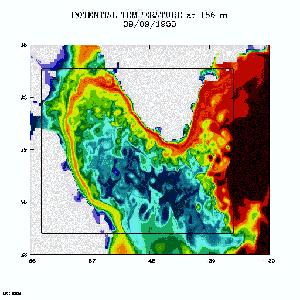 Ocean circulation in the Labrador Sea: Temperature field at 180 m. depth obtained by a 1/15° zoom in a 1/3° model of the North Atlantic ocean. This simulation was performed with the OPA model and the AGRIF multiresolution software.
Ocean circulation in the Labrador Sea: Temperature field at 180 m. depth obtained by a 1/15° zoom in a 1/3° model of the North Atlantic ocean. This simulation was performed with the OPA model and the AGRIF multiresolution software.
Copyright LEGI-LJK. -
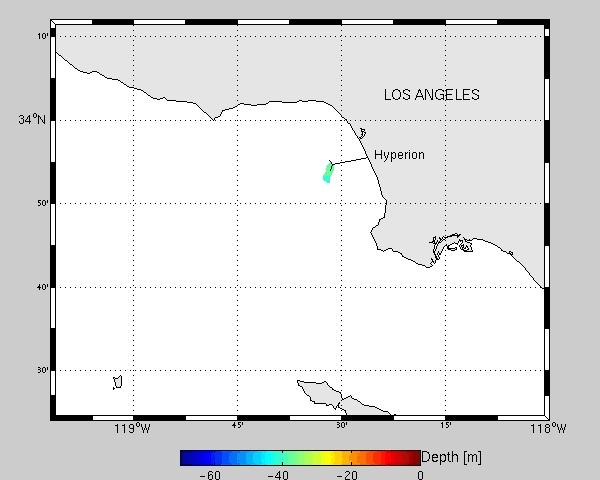 Tracer dispersion in the Bay of Los Angeles:
Tracer dispersion in the Bay of Los Angeles:
Simulation of the dispersion of particles rejected at 40 m. depth. Colors indicate the depth of the particles. This locally high resolution solution is obtained thanks to 3 successive zooms, the coarser model covering the whole American west coast. This simulation was performed with the ROMS model and the AGRIF software.
Copyright IRD-LJK. - Optimized boundary conditions for ocean dynamics:
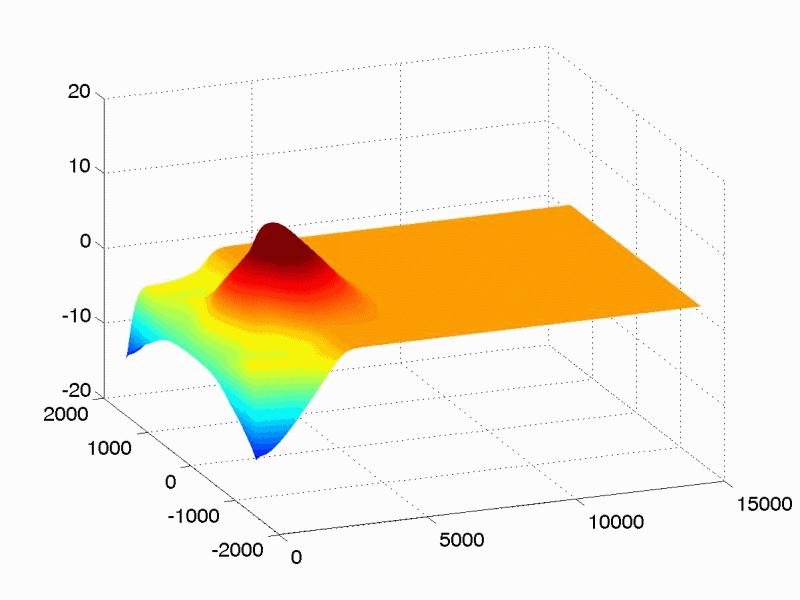
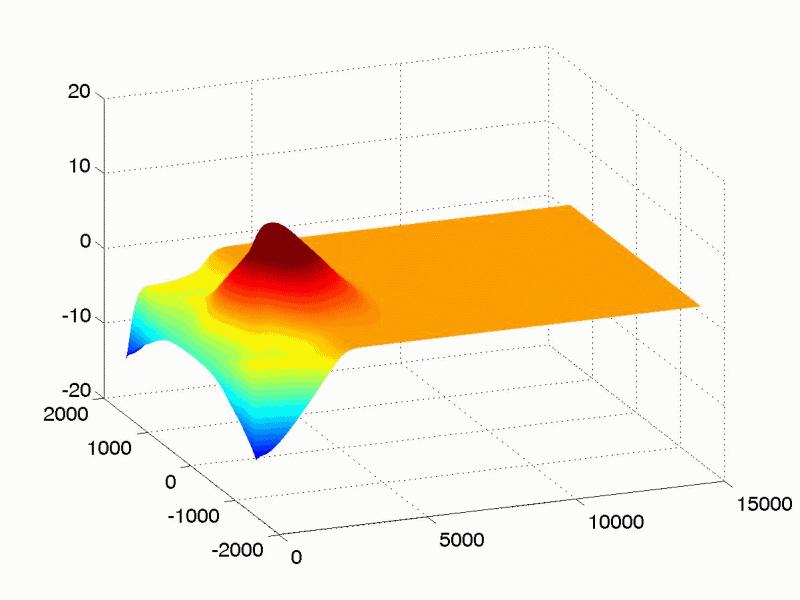
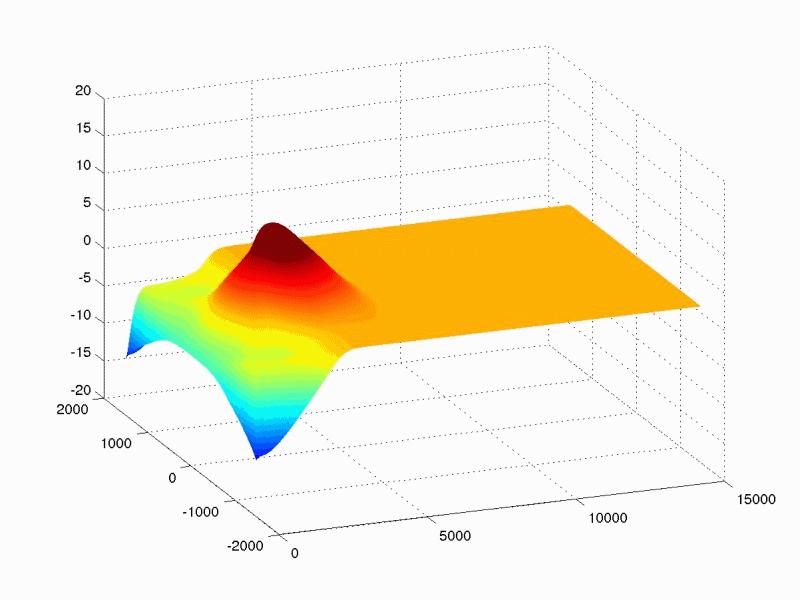 The aim of this simulation is to illustrate the efficiency of optimized interface conditions for domain decomposition algorithm. This simulation displays the propagation of a Kelvin wave in a shallow water channel. A reference single domain solution is compared with a two-subdomain solution. Left panel: single domain reference solution. Middle panel: solution after two iterations of domain decomposition with simple Dirichlet conditions. Right panel: solution after two iterations of domain decomposition with optimized conditions.
The aim of this simulation is to illustrate the efficiency of optimized interface conditions for domain decomposition algorithm. This simulation displays the propagation of a Kelvin wave in a shallow water channel. A reference single domain solution is compared with a two-subdomain solution. Left panel: single domain reference solution. Middle panel: solution after two iterations of domain decomposition with simple Dirichlet conditions. Right panel: solution after two iterations of domain decomposition with optimized conditions.
Copyright LAGA-LJK. - Cosine effect on QG equations.
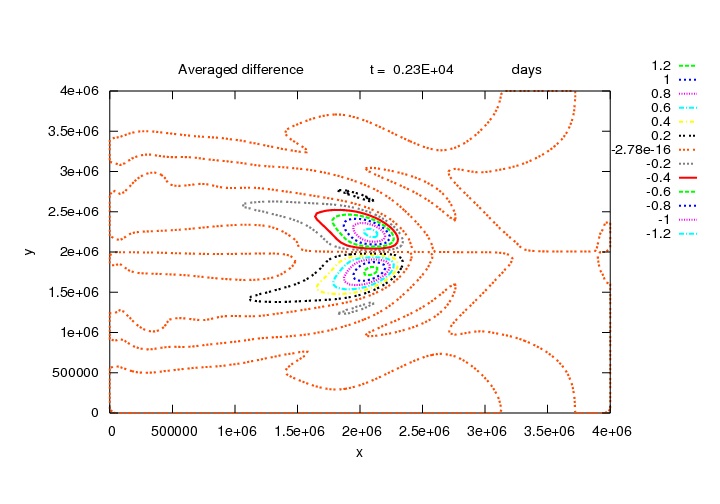
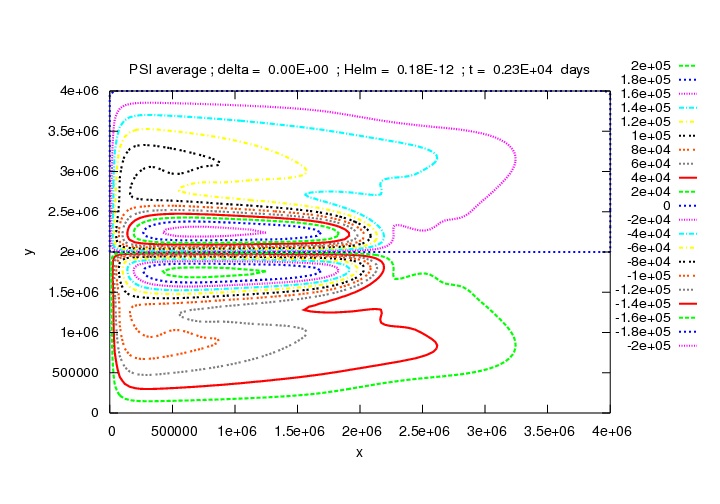 This simulations reveals the role of the cosine term in the quasi-geostrophic equations. On the left, a classical simulation of QG equations is performed and contours of the streamfunction are plotted. On the right, we show the difference between the QG model with and without cosine term. Both quantities (left and right) are time-averaged, because of the turbulent regime in which the computations are performed. The differences between the two model grow to 10% for long time computations. The cosine effect has thus to be taken into account in climate simulations.
This simulations reveals the role of the cosine term in the quasi-geostrophic equations. On the left, a classical simulation of QG equations is performed and contours of the streamfunction are plotted. On the right, we show the difference between the QG model with and without cosine term. Both quantities (left and right) are time-averaged, because of the turbulent regime in which the computations are performed. The differences between the two model grow to 10% for long time computations. The cosine effect has thus to be taken into account in climate simulations.
Copyright LJK.
Atmosphere-Ocean coupling
- Simulation of Tropical cyclone Erica:
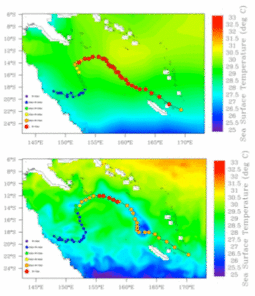
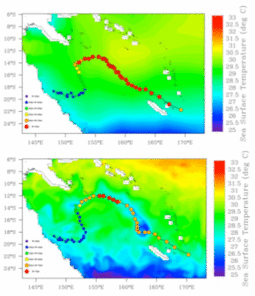 March 2003, off New Caledonia, using the regional atmospheric model WRF. Two simulations are compared. The first one is in a forced mode, i.e. without retroaction from the atmosphere onto the ocean. The second one is in a coupled mode, i.e. with the retroaction, the ocean being simulated with the model ROMS. The simulation in forced mode exhibits an overestimation of the intensity of the cyclone, while the simulation in coupled mode leads to a more realistic solution, due to an improved representation of the ocean-atmosphere interactions.
March 2003, off New Caledonia, using the regional atmospheric model WRF. Two simulations are compared. The first one is in a forced mode, i.e. without retroaction from the atmosphere onto the ocean. The second one is in a coupled mode, i.e. with the retroaction, the ocean being simulated with the model ROMS. The simulation in forced mode exhibits an overestimation of the intensity of the cyclone, while the simulation in coupled mode leads to a more realistic solution, due to an improved representation of the ocean-atmosphere interactions.
The animations display the 10m-wind velocity.
Copyright LJK.



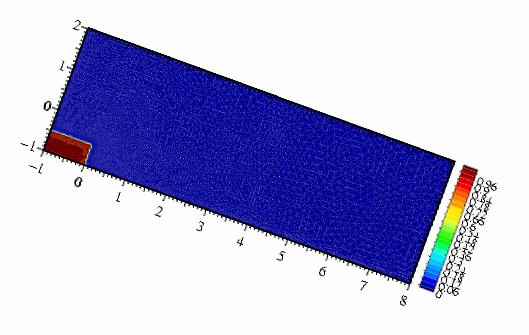
 INP
INP Inria
Inria LJK
LJK UGA
UGA